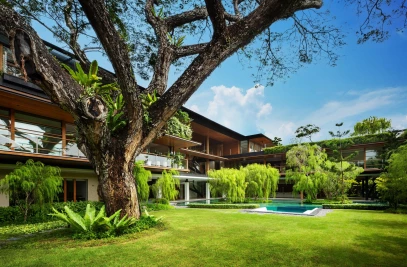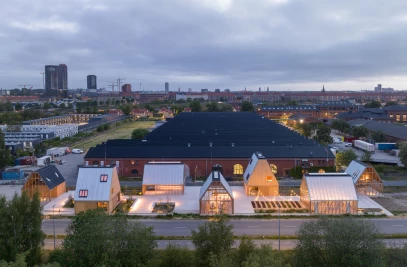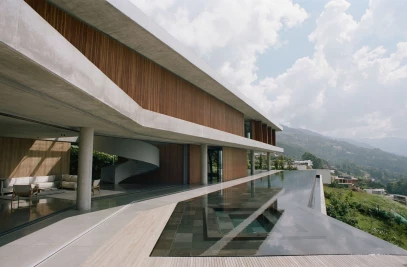Earlier this year, Archello wrote about virtual architectural tours during the Covid-19 pandemic, and particularly focused on the Frank Lloyd Wright Foundation’s virtual tour portals. The Foundation has extended on this virtual theme by enlisting Spanish architect David Romero to bring one of Wright’s never realized projects to life through 3D photorealistic renderings, digitally rendered designs translated into images which are so detailed that they appear as contemporary photography.

The original Arizona State Capitol building in Phoenix was constructed before Arizona reached statehood, and as the population grew it became clear that the capitol needed to be extended on. In the late 1950s, the state contracted a group called Associated State Capital Architects to come up with a design, but were unhappy with the options. Arizona resident Frank Lloyd Wright, already well known at the time, submitted an unsolicited design which sparked heated controversy and was ultimately rejected (one legislator deemed his proposed design to resemble an ‘oriental whorehouse’.) The full story and details of the controversy can be found in The Frank Lloyd Wright Quarterly, a hard-copy magazine for members of the Frank Lloyd Wright Foundation, but the Foundation have shared with Archello some of the core aspects of Wright’s proposal:
Wright’s vision was for the Capitol to be a grand desert ‘oasis of democracy’, a one-story shelter complex responding to Alhambra, the grand 14th century Spanish palace and fortress of Moorish kings. This ‘Oasis’ would be organic to the Arizona landscape, a welcome space for visitors and residents featuring a gazebo style dome structure comprising a 400-foot-wide hexagonal lattice made of perforated reinforced concrete plated in blue oxidized copper. This structure would be supported by ornate native onyx colonnades. The lattice was designed to filter sunlight as if through foliage, and inside, lush botanic gardens would be planted with natives which would grow toward and eventually throughout the honeycombed ceiling to unify the natural landscape and built structure into one entity. Fountains would shoot streams of water through the lattice to entryway reflecting pools and welcome gardens on either side of the dome. In the centre of the dome garden, a glass atrium would house paintings, murals, and exhibitions by local artists. This would be called Arizona Hall, and it would be flanked by two smaller hexagonally domed halls accommodating the House and the Senate.

The original drawings called for two spires jutting from either side of the dome to accommodate radio and television antennae. These were changed later to a single tower element and offset from the dome centre, the only element breaking the overall symmetry of the design.

The Oasis was to be situated in Papago Park approximately ten miles from downtown Phoenix, an area of hundreds of acres of red sandstone outcrops and dramatic rock formations that characterize the Arizona landscape. Wright believed this would provide a natural and fitting backdrop for and extension of the structure.
Although not originally from Arizona, Wright had adopted the state as his home and lived there for 25 years. He intended the Oasis design as a gift to the people of Arizona, inscribing his architectural drawings with the motto ‘Pro Bono Publico’ – for the benefit of the people.
Ultimately, his design was deemed by the powers that be as too controversial, too radical, too and expensive, and the Oasis was never built. Wright did design and build other famous Arizona landmarks. One notable example, the Grady Grammage Auditorium on the Arizona State University Campus was built posthumously and now, ironically, attracts more visitors than the Capitol.

For more never before seen photorealistic renderings by David Romero of the Oasis and the full story of the controversy surrounding the project from journalist Rebecca Rhoades, subscribe as a member to the Frank Lloyd Wright Foundation. The Fall issue also features photorealistic renderings of two other Wright designs – The Huntington Hartford Play Resort & Sports Club and the Rosenwald School.






























